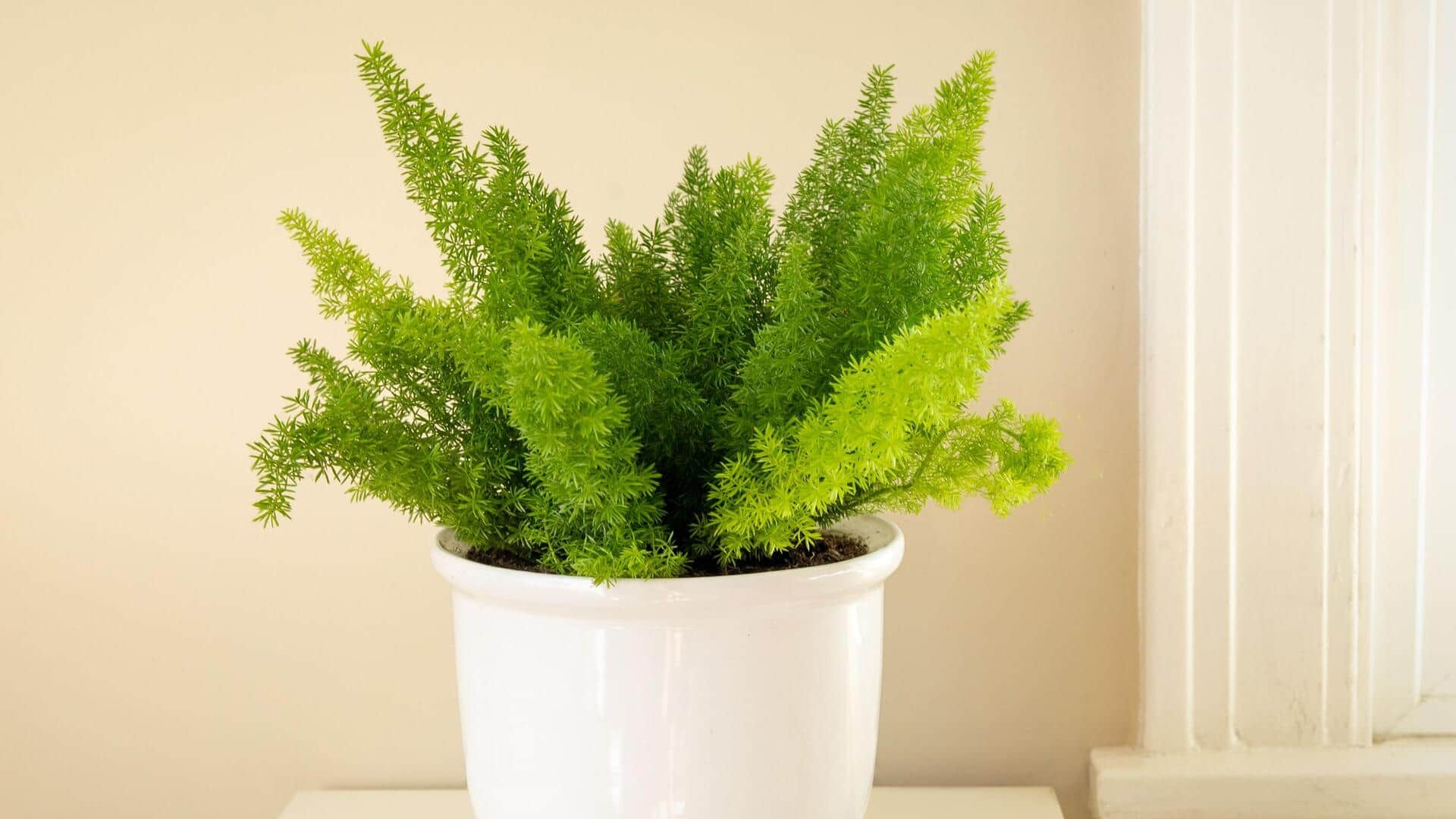
Indoor care techniques for growing asparagus ferns at home
What's the story
Asparagus ferns, despite not being true ferns but members of the lily family, are popular choices for indoor greenery thanks to their delicate, feathery foliage. However, these beauties require some special care to thrive indoors. This article provides five essential tips for caring for asparagus ferns, helping you keep them healthy and beautiful in your home.
Lighting
Optimal lighting conditions
Asparagus ferns thrive in bright, indirect light. Direct sunlight can burn their delicate leaves, while insufficient light can lead to leggy and sparse growth. A north or east-facing window is perfect, allowing the plant to bask in the gentle morning sun it loves. If you only have south or west-facing windows, use a sheer curtain to diffuse the harsh afternoon sun.
Watering
Proper watering routine
Watering is key for asparagus ferns; they like to be kept evenly moist but hate waterlogging. During the growing season, maintain lightly moist soil by watering when the top inch feels dry. In winter, cut back on watering but never allow the soil to become bone dry. Overwatering can lead to root rot, so ensure your pot has good drainage.
Humidity
Humidity needs
These plants love high humidity, which mimics their native tropical environments. Indoor air, particularly in winter with heaters running, can be too dry. To raise humidity, mist your plant with water regularly or place its pot on a tray with pebbles and water (ensure the pot's bottom isn't sitting in water). A humidifier positioned close can also help keep the surrounding air at the right humidity.
Fertilizing
Fertilizing schedule
Feeding your asparagus fern will help it stay lush and vibrant. Apply a balanced liquid fertilizer diluted to half strength every month during the growing season (spring and summer). Avoid fertilizing in fall and winter when the plant naturally enters a rest period. Remember, over-fertilization is more detrimental to these plants than under-fertilization, so err on the side of caution!
Repotting
Repotting and soil composition
Asparagus ferns generally require repotting every two years or when you observe roots protruding through drainage holes at the bottom of its pot—whichever is earlier. Select a pot that's one size bigger than its current one and use well-draining potting mix formulated for houseplants or create your own by combining two parts peat moss with one part perlite and one part vermiculite.